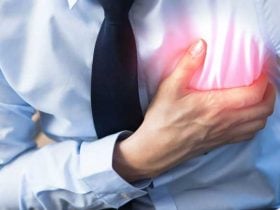Hypotension, which is also called low blood pressure is when the blood volume in the body drops. This condition may manifest itself in several symptoms, which include fainting or dizziness because the brain is not receiving enough vital fluid to function properly.
Low blood pressure has some causes that aren’t due to underlying disease. For example, families with a history of low blood pressure put each generation at a high risk of developing this condition. Health conditions and medication side effects are some of the causes of hypotension. The cause of low pressure can only be determined with blood tests, radiologic studies, and cardiac testing to look for heart failure and arrhythmias.
It may also be caused by sudden movements and harmless activities like urinating. Intense emotions like love, fear, anger, or anxiety are also common triggers of low blood pressure. It is advisable for patients suffering from this condition to rise slowly from sitting or lying positions to help ease the symptoms. Adapting to a clean and healthy lifestyle is an effective step towards correcting hypotension.
Patients are advised to develop alcohol-free and substance-free lifestyle to improve symptoms. Drinking multiple liters of water per day may also help minimize severe symptoms. Eating low-carbohydrate meals and in small portions combined with fruits and vegetables may also help.
Common symptoms of low blood pressure include
- Faint
- Cold sweats
- Rapid and shallow breathing
- Bloody stool
- Dizziness or lightheadedness
- Fatigue
- Confusion and lack of concentration
These symptoms are most prominent when patients make sudden movements from the lying or sitting positions to a standing position. This type of hypotension is called orthostatic hypotension. Health complications from hypotension are caused by an inadequate flow of blood to the body’s organs. This short supply can cause strokes, heart attacks, shocks, brain damage, and kidney failure.
The symptoms of low blood pressure are dependent on the cause of the disease. Lightheadedness or dizziness is caused by a shortage of blood supply to the brain, which results in that the brain cells are unable to receive adequate oxygen and nutrients for proper functioning.
The most common symptoms of low blood pressure include:
Lightheadedness or Dizziness

When blood pressure isn’t enough to supply an adequate amount of fluid to the vital organs of the body, they begin to malfunction, causing short-term or long-term damage. Light-headedness often occurs when the patient is in a standing position. This is because standing causes blood to settle in the veins of the lower body, and this may worsen hypotension. If a person already suffers from hypotension, then maintaining a standing position will lower it even more and may trigger serious symptoms. Light-headedness, dizziness, or fainting when standing due to low blood pressure is called orthostatic hypotension. The symptoms usually improve when the patient is in a sitting or lying position.













